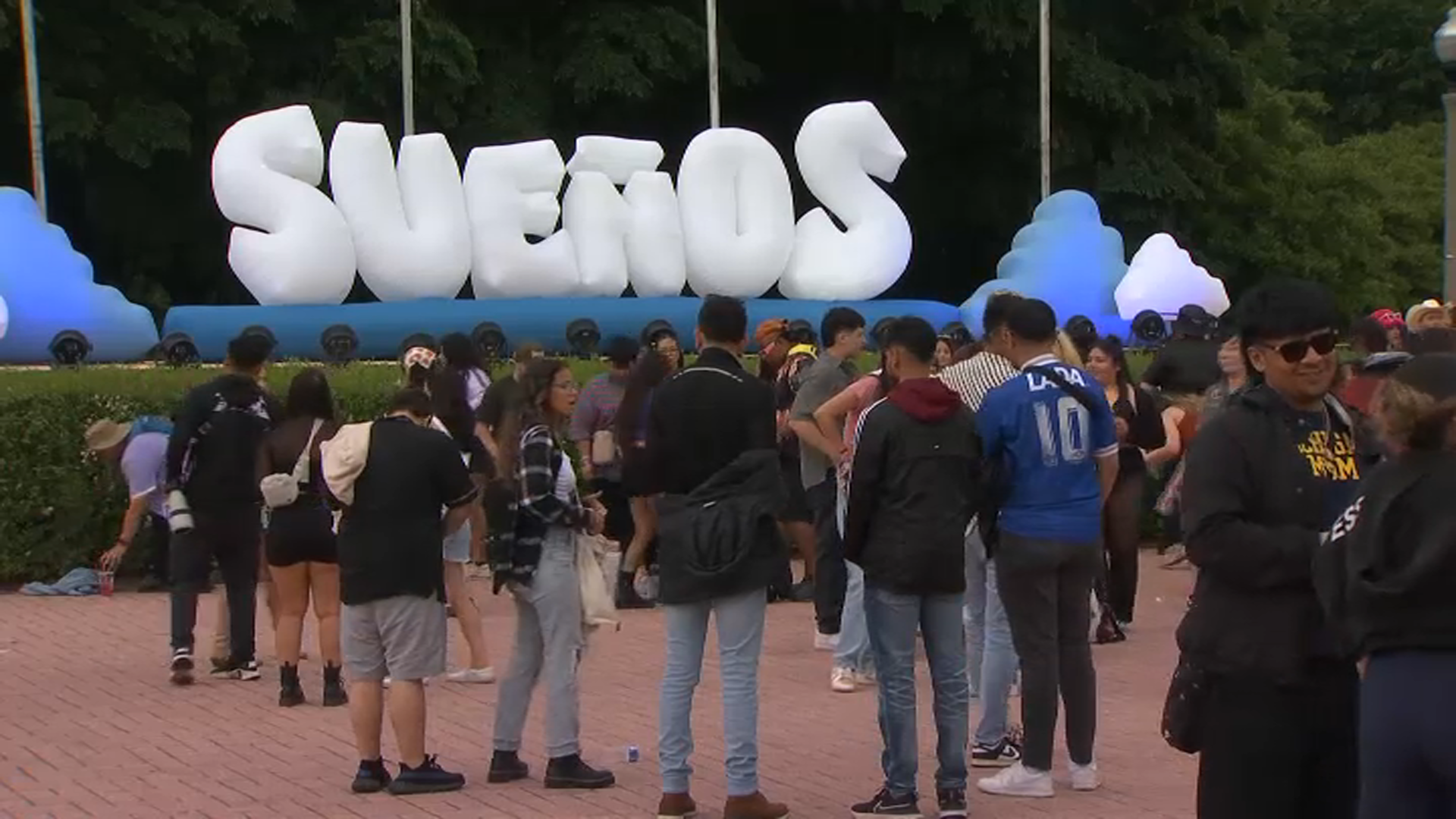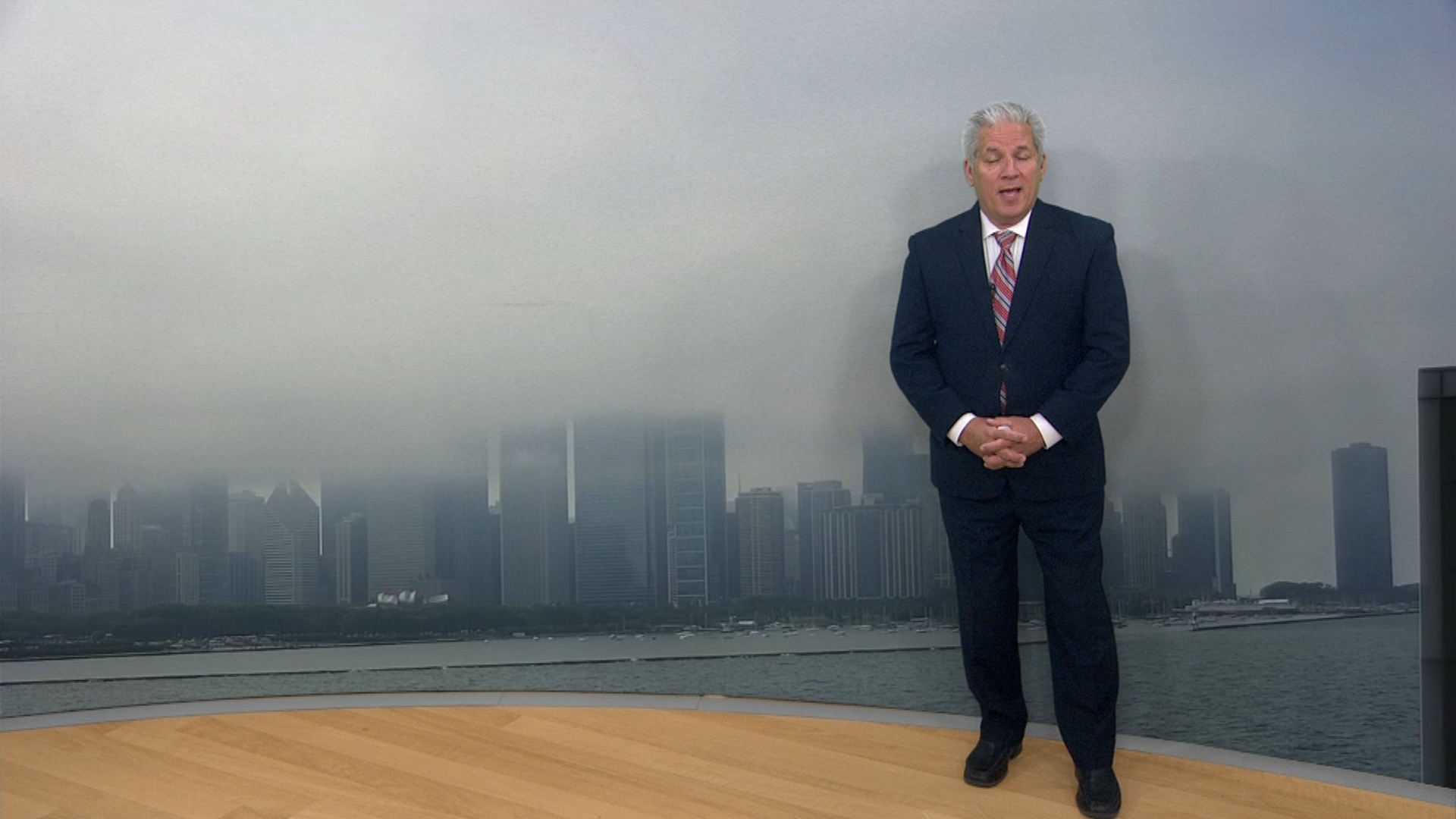A partial solar eclipse, nicknamed the "ring of fire" for its appearance, will be visible on Saturday, though likely not in the Chicago area due to extensive cloud cover and rainfall.
For those that won't be able to get a good look, NBC will be carrying NASA's live stream of the phenomenal event, which can be viewed here.
While the 2017 total solar eclipse lasted just a few minutes, this year's partial eclipse is quite a bit different.
Here's a look at what time the eclipse is expected to occur, and the chances of seeing it over Chicago.
What time will the eclipse happen?
According to the planetarium's Solar Eclipse viewing chart, the eclipse is slated to begin at around 10:37 a.m. CT, with the moon's shadow increasing as it moves across the sun. At 10:58 a.m., just over an hour later, the eclipse will reach its maximum point. The eclipse will come to an end that afternoon at around 1:22 p.m., when the moon will no longer cover any part of the Sun.
Local
Will I be able to see it?
According to Chicago's Adler Planetarium, "if skies are clear, the Chicago area will experience a partial solar eclipse on October 14."
Feeling out of the loop? We'll catch you up on the Chicago news you need to know. Sign up for the weekly Chicago Catch-Up newsletter here.
However, weather did not appear to cooperate, with rainfall and extensive cloud cover blocking any potential view.
"The likelihood of seeing it is low to zero," NBC 5 Meteorologist Pete Sack said Friday. "Because of the cloud cover that's going to be overhead, especially that time of day."
"If you see it, you just got lucky in the cloud cover," Sack added.
What will it look like?
"The solar eclipse on October 14 is actually an annular solar eclipse. During an annular eclipse, viewers in a very narrow path across Earth can see the Moon’s dark silhouette inside of the Sun’s disk. It looks like a black hole surrounded by a ring of bright light," the planetarium's website reads. "However, Chicagoland and most of North America are not in that narrow annular eclipse path, but they are close enough to it to be able to view a partial solar eclipse. This means that the Moon’s silhouette will only partially cover the sun, which creates the illusion that a bite has been taken out of the Sun’s disk."
That means in the Chicago area, the sun will appear "bitten," almost in half.
Meanwhile, the full annular eclipse will travel through parts of Oregon, California, Nevada, Utah, Arizona, Colorado, New Mexico and Texas, creating a "ring of fire" effect in the sky, according to NASA.
Here's a look at what Adler says Illinoisans will see:

Should I wear sunglasses?
If you're planning to catch a view of the eclipse, it's crucial to prepare ahead of time and get proper eye protection. You'll want to purchase safe solar glasses, which might appear like regular sunglasses at first glance, but are actually thousands of times darker.
Those who don't have proper eye protection risk sustaining permanent eye damage, which can happen in a matter of seconds. While wearing your eclipse glasses, make sure not to look at the sun through a camera lens, telescope, binoculars or any other optical device. The concentrated solar rays can burn through the filter and cause a serious eye injury.
If you'd rather stay indoors when the eclipse occurs, Adler is offering its own viewing experience. The planetarium will be going live on YouTube to show the partial solar eclipse from Chicago, weather permitting.



